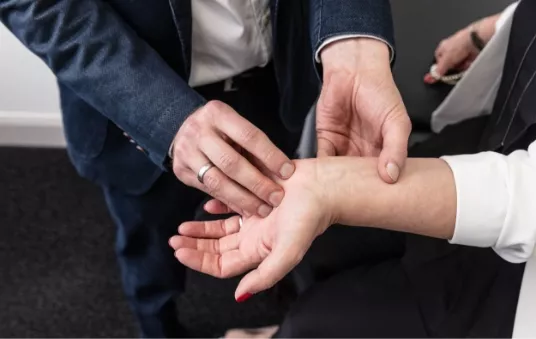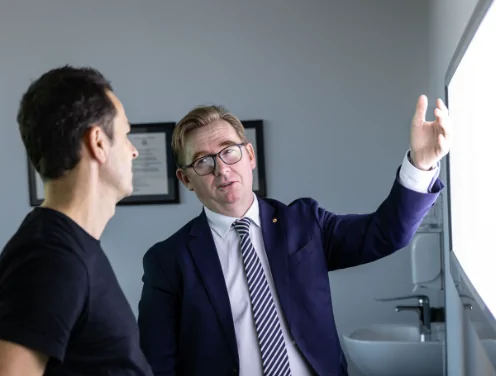What is the carpal tunnel?
The bones of the wrist are called the carpal bones. They form the floor of the tunnel. The roof is formed by a ligament that joins these bones together and is called the flexor retinaculum. Through the tunnel run the median nerve as well as several other structures including several tendons. Over time the flexor retinaculum becomes thickened and compresses the median nerve.
What is the median nerve and what does it do?
The median nerve is one of the main peripheral nerves of the upper limb. It travels through the forearm and enters the palm of the hand through the carpal tunnel. In the hand, it mainly supplies sensation (feeling) to the thumb, index and middle fingers. It also supplies a group of muscles at the base of the thumb.
What is carpal tunnel syndrome?
The syndrome describes a group of symptoms characteristic of compression of the median nerve at the wrist. The main symptom is numbness and paraesthesia (pins and needles), which may also be painful, that involves the hand and sometimes the forearm as well. It characteristically occurs at night and may wake the patient frequently. It may also occur with activities such as driving or using equipment such as tools that require a strong grip. With increasing severity, the symptoms, especially numbness, become more frequent and even constant. The muscles at the base of the thumb become weak and even begin to waste, that is, become thinner.
In most cases the ligament thickens by itself. However, it is also associated with other conditions such as rheumatoid arthritis. Pregnancy may cause a temporary carpal tunnel syndrome.



